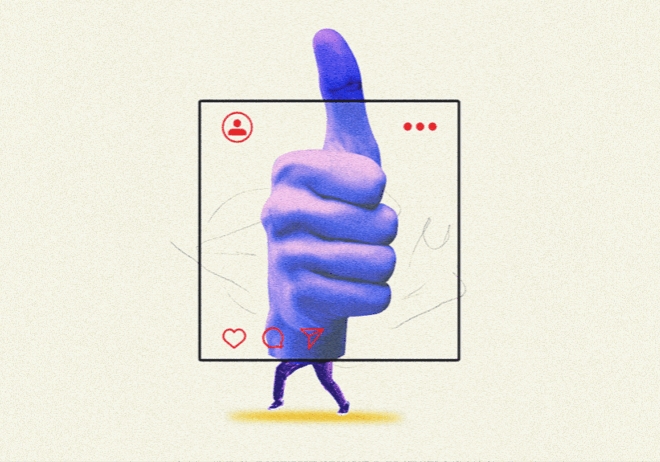
Ageism in Advertising is Silently Pushing Older People Out
Here’s a fun question for the advertising professionals: What is the most creative age for creativity? The right answer is that age doesn’t define creativity, and there should be no place for ageism in advertising.
If you’ve seen The Intern (and if not, seriously, put it on your watchlist), you’ll remember Ben Whittaker (played by Robert De Niro) stepping into a fast-paced, modern workplace as a senior intern. Jules Ostin (Anne Hathaway) doubted his abilities at first, solely based on his age. Spoiler alert: Ben proved that experience and wisdom don’t just keep up—they can lead the way.
But here’s the kicker: many advertising agencies seem to be writing off their own Bens in real life. A troubling trend is emerging—seasoned professionals over 50 are leaving agencies, both voluntarily and involuntarily. This silent exit is unfolding even as companies wave the flag of DEI (Diversity, Equity, and Inclusion). How’s that for irony?
We’re at a crossroads. On one hand, the industry is hungry for fresh, youthful energy. On the other, it risks losing a wealth of experience and perspective, and let’s not forget those golden Rolodexes (yes, they still matter). The question is, how do we balance innovation with inclusion?
Let’s dive into the report uncovering why advertising is quietly pushing older creatives out—and what the industry must do to turn this trend around. Because, let’s be honest, age isn’t a barrier to creativity—it’s a power source.
Stats tell a grim story of the existence of ageism in advertising
A new report has shed light on an uncomfortable truth—ageism is alive and kicking in the advertising industry, and the numbers are downright revolting.
The Experience Advocacy Taskforce (EAT) and Advertising Industry Careers (AIC) joined forces to conduct a survey of 130 ex-employees who had previously worked in full-service agencies, media agencies, creative agencies, and with media owners/publishers. These aren’t just any respondents—they’re seasoned professionals who have left the industry entirely, either voluntarily or involuntarily.
Here’s the shocking breakdown: over 55% of those surveyed were aged 40-54, showing that ageism often begins mid-career. The impact becomes even steeper for professionals over 50, who seem to be at the highest risk.
- Media agency professionals reported the highest exits, with a staggering 26.72% leaving the industry.
- Media owners/publishers, by contrast, saw the lowest exits at 12.99%.
- Global agencies showed the most significant turnover, with a jaw-dropping 67.69% of respondents exiting, followed by 34% from media agencies.
Old is not just gold—it’s bold, brilliant, and better in coming days
Here’s a reality check: the age group our creative agencies treat as “past their prime” might just be the most underappreciated resource in advertising. Let’s unpack some hard truths.
There’s this misconception floating around—that only young creatives can navigate the digital whirlwind of AI, machine learning, or Web 3.0. Meanwhile, seasoned professionals over 50 are supposedly out of touch. Spoiler alert: that couldn’t be further from the truth.
According to the survey done by EAT and AIC, only 2% of respondents admitted to struggling with technology and industry standards. Yep, just 2%. So, what about the other 98%? Many left the industry involuntarily, with over 35% citing forced exits. These are skilled, tech-savvy professionals who aren’t just capable but essential.
And yet, the advertising world seems to be stuck in a youth-obsessed bubble.
A study by CreativeX revealed that in 2022, only 4% of people cast in ads were over 60. Think about that: while older demographics make up a significant portion of the global population, their representation in both ads and ad agencies is practically non-existent.
The World Economic Forum predicts the global population aged 65 and above will double to 1.6 billion by 2050. That’s a lot of experienced, active, and savvy consumers being sidelined—both as creators and as audiences. The advertising industry needs a wake-up call.
There’s still time to reverse the ageism trend and bring the original ‘young guns’ back to the business
Professionals who have left their positions because of the ageism in advertising agencies are willing to return regardless of the positions they may get back to.
The survey shows that 1 in 4 ex-advertising professionals are eager to make a comeback, with the majority open to freelance, part-time, or full-time roles. This isn’t about chasing past glory; it’s about reigniting their passion for the craft they love.
7 out of 10 individuals are willing to accept positions below their previous roles. They are not just burning with passion; they are also thinking about real income.
However, the dreaded ‘ghosting’ has become a common occurrence for job seekers in a particular age group. Many in this age group report being ignored despite their impressive résumés and decades of expertise.
They say, “where there’s a will, there’s a way,” and the advertising world could use a healthy dose of that wisdom. Building a truly diverse, inclusive, and sustainable workspace is a key to keeping seasoned professionals—especially those over 45—from feeling pushed out.
So, what’s the way forward? For starters, we need to kick age bias to the curb during hiring. Let’s stop judging résumés by the year someone graduated and start focusing on the value they bring.
Next, the industry could do with a little creativity in its recruitment and retention strategies. Rolling out mentorship programs or flexible career paths for seniors but still have desire to contribute? And while we’re at it, how about treating experienced employees as assets rather than costs? So, let’s mix it all up and serve a more inclusive, sustainable workspace that benefits everyone.
Cut to the chase
The advertising industry often projects an image of being young and fresh. But that’s just one side of the story. The other side reveals bias, neglect, and exclusion. A recent study on ageism in advertising has brought to light a grim reality, challenging the effectiveness of DEI measures.

